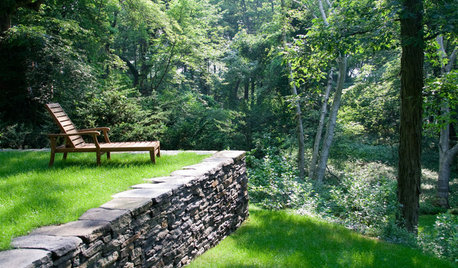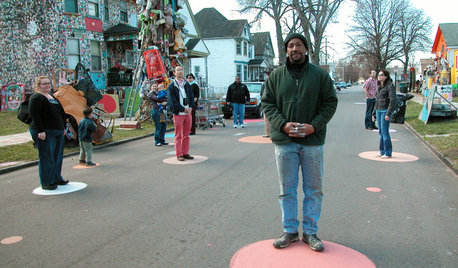Goat fencing help
jennel_d
15 years ago
Related Stories

CURB APPEAL7 Questions to Help You Pick the Right Front-Yard Fence
Get over the hurdle of choosing a fence design by considering your needs, your home’s architecture and more
Full Story
PETSHow to Help Your Dog Be a Good Neighbor
Good fences certainly help, but be sure to introduce your pup to the neighbors and check in from time to time
Full Story
LANDSCAPE DESIGNWhat the Heck Is a Ha-Ha, and How Can It Help Your Garden?
Take cues from a historical garden feature to create security and borders without compromising a view
Full Story
SMALL SPACESDownsizing Help: Think ‘Double Duty’ for Small Spaces
Put your rooms and furnishings to work in multiple ways to get the most out of your downsized spaces
Full Story
PETS6 Ways to Help Your Dog and Landscape Play Nicely Together
Keep your prized plantings intact and your dog happy too, with this wisdom from an expert gardener and dog guardian
Full Story
COFFEE WITH AN ARCHITECT10 Tips to Help You Put Off Procrastinating
Blank page staring at you? Look it in the eye, then vanquish it in 10 only slightly meandering steps
Full Story
REMODELING GUIDES8 Tips to Help You Live in Harmony With Your Neighbors
Privacy and space can be hard to find in urban areas, but these ideas can make a difference
Full Story
8 Ways Dogs Help You Design
Need to shake up a room, find a couch or go paperless? Here are some ideas to chew on
Full Story
FUN HOUZZDecorated Houses Help Save a Detroit Neighborhood
Art's a start for an inner-city community working to stave off urban blight and kindle a renaissance
Full Story
HOUSEKEEPINGWhen You Need Real Housekeeping Help
Which is scarier, Lifetime's 'Devious Maids' show or that area behind the toilet? If the toilet wins, you'll need these tips
Full Story





yakimadn
doninalaska
Related Professionals
Arlington Landscape Architects & Landscape Designers · Bellefontaine Neighbors Landscape Contractors · Rancho Santa Margarita Landscape Contractors · Crowley Landscape Contractors · Nashville Fence Contractors · Fountain Fence Contractors · Oxnard Fence Contractors · Salida Fence Contractors · West Jordan Fence Contractors · Arbutus Decks, Patios & Outdoor Enclosures · Jupiter Decks, Patios & Outdoor Enclosures · Kyle Decks, Patios & Outdoor Enclosures · New Berlin Decks, Patios & Outdoor Enclosures · Somerville Decks, Patios & Outdoor Enclosures · Wildomar Decks, Patios & Outdoor Enclosuresgoodhors
msjay2u